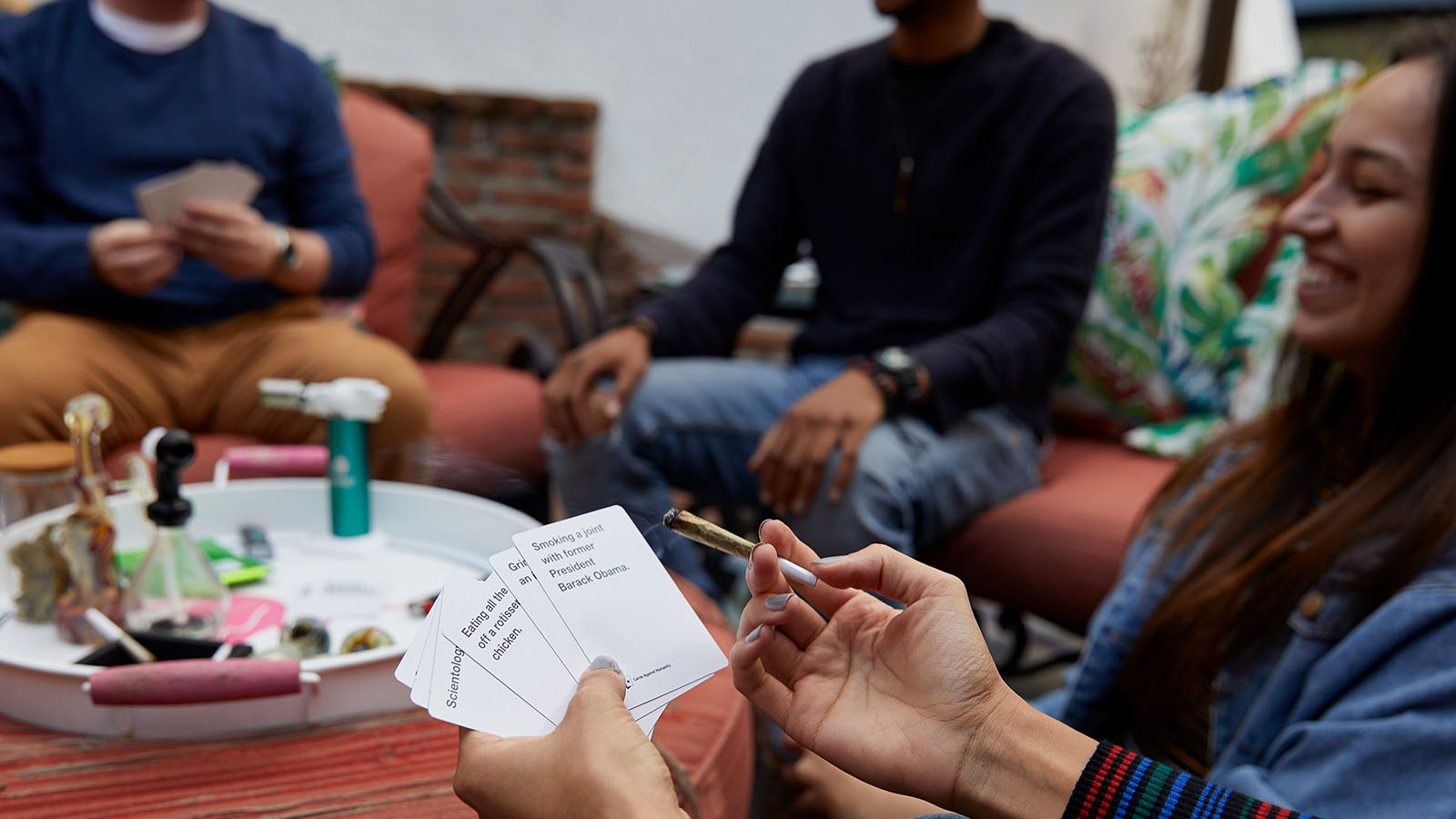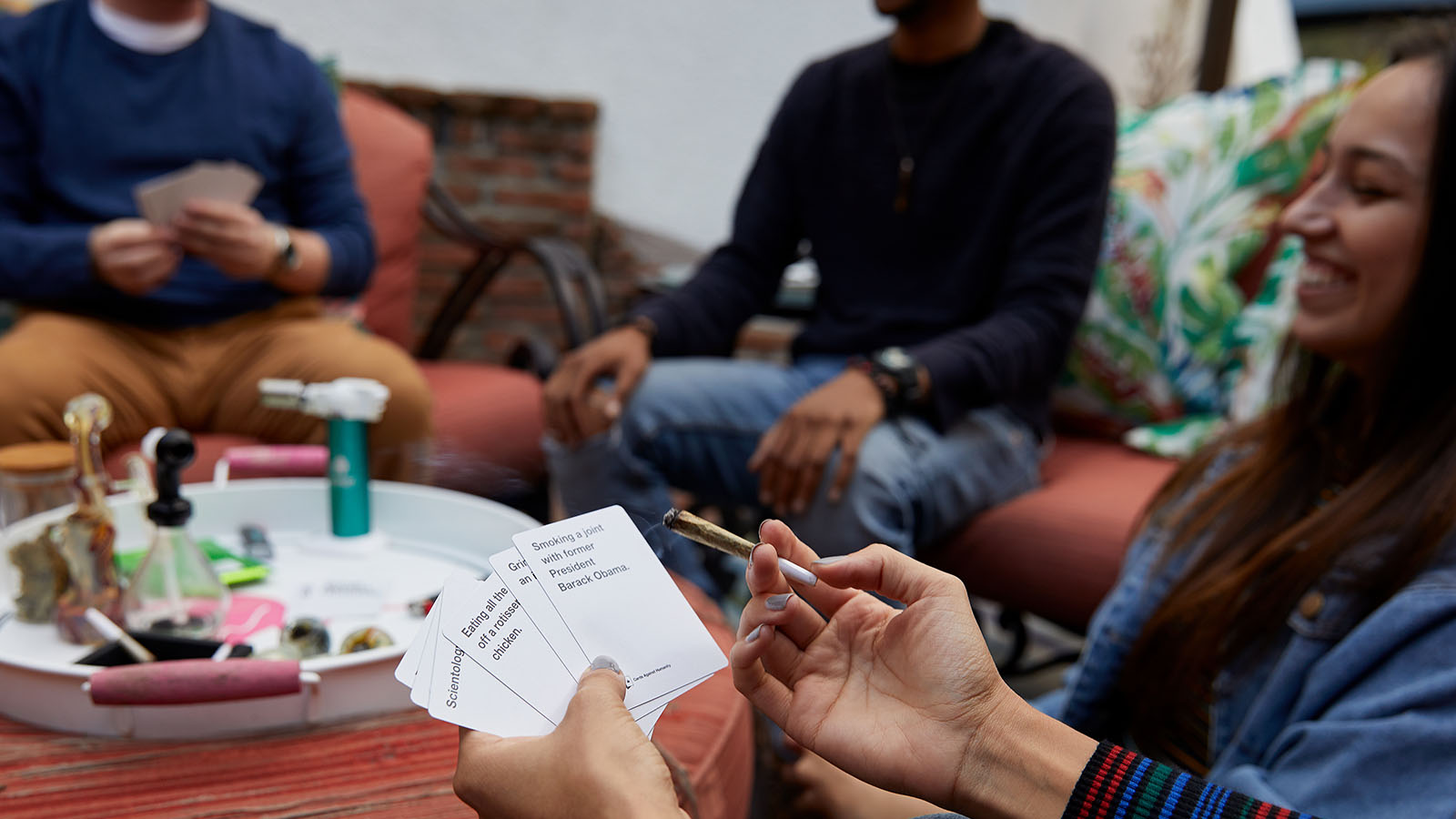
At a glance, using weed has gone from a disorderly habit and conversation conducted in whispers to a rebellious industry that has captured the notice of yuppies and celebrities alike. But take a closer look and you’ll notice a long history and constellation of people using cannabis in a multitude of ways for myriad reasons. This makes for a culture that can be challenging to fully understand and nearly impossible to define.
Perhaps the culture of weed is best described by Anja Charbonneau (whom you’ll learn more about in this piece) in the fourth issue of her independent magazine Broccoli: “Cannabis culture is not any one thing. It can be weird and funny and playful and pretty and ugly and confusing and exhilarating and murky and unfair and criminal and legal and amazing and insular and international and corporate and homegrown.”
Pinning down where that cannabis culture is headed next seems more difficult than predicting the constantly shifting legal landscape or anticipating the latest medical developments, but Weedmaps News gathered three voices who are contributing to the development of this era of marijuana to speak about how far the culture has come and where it’s headed next.
The Ambassador: Tim Blake, Founder and Producer of the Emerald Cup
There is perhaps no greater influence to the evolution of cannabis culture in the age of legalization than the Emerald Cup. Dubbed the “Oscars of pot” by LA Weekly, the annual cannabis competition has since 2003 invited cultivators, breeders, and extractors to Northern California to show their work.
“I would have never imaged back then that it would grow into what it is today. We were just hoping to not get arrested and have a small, friendly party.” Tim Blake, the Emerald Cup founder and producer, told Weedmaps News. “When it evolved over the ensuing years, it slowly became obvious that it could get bigger and bigger.”
Tim Blake is founder and producer of the Emerald Cup, a cannabis culture festival in Santa Rosa, California. He has aspirations of taking the Emerald Cup across the U.S.
In 2018, the cup took place in its new home of Santa Rosa, California, and welcomed upward of 25,000 guests. Blake and his team are also laying the groundwork for other cannabis events to participate in the new legal landscape, educating California’s Bureau of Cannabis Control and its chief, Lori Ajax, on how to work with a community with deep roots and regulate an industry they know little about. But despite the challenges and changes, Blake is more hopeful than ever.
“As challenging as 2018 was, 2019 and 2020 are going to make up for that in spades,” Blake said. “We’re going to have a tremendous growth in the next two years, and it’s going to make up for a lot of the challenges people went through this year.”
The Cannabis Community Will Continue to Teach the State How to Regulate the Industry
Blake doesn’t look at the BCC as adversaries, but as teammates in changing the legal landscape in the largest cannabis market in the world.
“These people in the BCC aren’t cannabis people. They’ve done the best they can, but they didn’t live inside of a dispensary working a year or go to events,” Blake said. “And I don’t want to criticize them too much because I know they tried, but we are educating them because they really need to learn.”
Blake believes that the forged partnership will lead to tangible change. Fewer people are going to prison and more consumers and patients are getting the cannabis they need. “We’re going to continue what we do which is educating not only the BCC and state, but the rest of the world,” Blake assured.
More Events and Expansion
Naturally, the relationship between the cannabis community and its regulators should bear fruit. Blake believes that will mean more opportunities for cannabis to have a presence in mainstream, established events.
Blake envisions festivals, concerts and other events having weed lounges in the style of beer gardens. It’s a no-brainer, really, as Blake points out that most festival and concert audiences have people who are smoking cannabis anyway.
And with the interest in cannabis continually growing, not only will marijuana consumption be a part of the event going experience, it will also be the main attraction. As the audience for cannabis-focused events grows larger, established production companies may start to look to saddle up with long-running cannabis competitions.
The Emerald Cup itself is an example with its new partnership with Red Light Management and Starr Hill Presents. Red Light Management is one of the largest independent music management companies that includes the Dave Matthews Band, Alabama Shakes, and ODESZA on its artists’ roster. Starr Hill Presents, one of the largest independent concert promoters in the United States, has worked with such festivals as Outside Lands in San Francisco; Bonnaroo in Manchester, Tennessee; and South by Southwest (SXSW) in Austin, Texas.
With this kind of firepower in its arsenal, the Emerald Cup has the chance to expand much further than Blake and his partners could have ever fathomed back when they were wondering whether they were going to busted for their small, friendly party.
Blake hopes they can build something that could end up being a “modern Lollapalooza.” While the idea of a traveling cannabis festival may be a couple of years away, Blake and his crew are laying the groundwork now by forming the process and the team to bring the Emerald Cup anywhere in the U.S.
The Creative: Anja Charbonneau, Broccoli Founder and Editor in Chief
Broccoli Magazine had a big 2018 for a independent publication with an all-female staff that produces otherworldly spreads focusing on the complex, nuanced beauty of cannabis. And while Broccoli’s success may seem to come in spite of its playfully independent spirit and sensitive nature, turn a few pages and you’ll quickly realize that it’s these very qualities that drives its success and captures the hearts and minds of cannabis enthusiasts and thinkers.
Broccoli is the brainchild of Anja Charbonneau, a former Kinfolk magazine creative director who says she was just an enthusiastic consumer when she saw the weed world blooming. “I wanted to combine the two passions,” Charbonneau told Weedmaps News.
Anja Charbonneau is editor in chief and creative director of Broccoli, a Portland, Oregon-based cannabis-focused magazine produced entirely by women. She was previously creative director of another Portland publication, Kinfolk magazine.
Based in Portland, Oregon, Charbonneau said the city’s open-mindedness and creativity makes for the ideal breeding ground for such a publication.
“No one was shocked when [cannabis] became legal,” she said with a laugh. She set out with a vision and was able to quickly assemble her team and find her audience — neither of which seemed to come as much of surprise to her.
“I knew there were other people like me out there,” she said about assembling her staff. “And there was nothing else tapping into this specific type of vibe.” Broccoli’s quarterly circulation of 30,000 has subscribers in nearly every U.S. state and has found unlikely international success, finding readers as far as Germany and Japan.
In 2018, Broccoli was a vehicle for female writers, photographers, artists, and stylists to share their personal cannabis stories and observations, exposing cannabis-focused readers to diverse cultural and familial backgrounds. “People often come to or use weed in these very transformative experiences or parts of their lives,” Charbonneau said. She believes that readers are gravitating towards Broccoli because it’s “reflecting this part of themselves that they haven’t really seen in a positive light before.”
An often-stigmatized activity and once-outlaw industry makes for a protective and suspicious culture. Perhaps the biggest contribution that Broccoli and its staff has made to the cannabis culture is revealing how personal the act of consuming and sharing cannabis truly is.
More Artists Looking to Weed for Inspiration
Before founding Broccoli, Charbonneau was a growing bored in her role as creative director of Kinfolk magazine, like Broccoli based in Portland but focusing on home design. “It was getting a little tiresome trying to come up with new ideas,” she said. “And now I’m like, ‘Wow, I can do all these things with weed and it will be new.’”
While marijuana has historically been regulated to the outskirts of culture, as public interest grows more artists are finding fertile ground with cannabis. Charbonneau is seeing a wider acceptance of cannabis-inspired work in the art world — and hopes to see that continue.
“I’m really hoping that we see more artists and creators dipping their toes in weed stuff and showing that part of themselves to their audiences,” she said. “When you just see [cannabis] here and there it becomes so much more normal and comfortable if you see an artist you like referencing weed.”
MoMA PS1 in Long Island City, New York invited the Broccoli team to produce a cannabis flower installation arranged by floral designer and stylist Amy Merrick in February 2019. “I kind of can’t believe that we’re going to get to bring plants to the museum in New York,” she said in disbelief. “It is a new, emerging cultural thing. A lot of people see that and want to be a part of it.”
Using Weed as Inspiration to Explore Ideas
“We really wanted to make an magazine that extended beyond the boundaries of just weed,” Charbonneau said.
Using weed to enhance the senses to enjoy the layered sounds in music and nuanced smells of a flower, or tapping into the mysterious ideas that lay hidden beneath the surface of one’s mind isn’t exactly a new idea, but it’s important to embrace this aspect of cannabis use. Charbonneau, somewhat cheekily, likens it to “the way that you connect with someone when you find out that you both smoke weed, but then you need to have more in common to be friends and really get to know each other.”
Charbonneau hopes that the cannabis culture remains a place where people can stay true to themselves, express their stories, and connect to one another in meaningful, impactful ways.
The Activist: Hannah Procell, Students for Sensible Drug Policy
The international grassroots organization Students for Sensible Drug Policy (SSDP), dedicated to reversing the harms done by the war on drugs, celebrated its 20th anniversary in 2018.
In 2018, SSDP also trained hundreds of student activists; lobbied marijuana reform policies to members of Congress; launched the International Activities Fund; contributed grass-roots efforts to reform cannabis laws in Utah, Michigan, and Missouri; and continued to educate students with harm reduction information and peer-to-peer drug education programs.
Oh, and they hired SSDP alum Hanna Procell as an advocacy fellow.
In 2018, Procell, 22, graduated with honors from New College of Florida with a focus on international studies, human rights, and social movements and justice. New College of Florida in Sarasota is a university with a history of drug policy reform leaders, and its where Procell attended her first SSDP conference in the spring of 2015, when she learned how to properly administer Naloxone and save lives by reversing overdoses. Less than two months later, two students died on campus from Fentanyl-mixed heroin overdoses. Procell became a leader in the club and carried out the work of SSDP at New College.
Hanna Procell is an advocacy fellow for Students for Sensible Drug Policy. The 22-year-old is an alumna of the New College of Florida in Sarasota.
“We’re working to enact change from the campuses to our communities all the way to the federal level and the United Nations,” Procell told Weedmaps News. “Overall, we’re just an organization of individuals who are genuinely very dedicated to ending all the harm that was created by the war on drugs.”
Procell has been inspired by the movement of young adults who saw the social and cultural consequences of prohibitionist policies and politics. Procell believes Generation Z, the generation she’s a member of, is more informed that past generations when it comes to drug policies, and that the conversation surrounding marijuana has come to a boiling point.
“I think that young adults are wise enough and educated enough to know that marijuana policy has never been informed by the pharmacological effects of the drug. Marijuana policy in the past in America has been informed by racism and fear, not fact,” Procell explained.
“We’re having a new wave of young adults who are for the first time seeing the comparison of what marijuana use looks like compared to alcohol and other drug use,” she said. “These young adults are starting to see that ‘Wow, marijuana use isn’t destructive of my future. In fact, it’s really helpful for my aunt who has cancer or my friend who is struggling from anxiety.’”
Procell believes that Generation Z’s informed view of cannabis will result in significant cultural changes in 2019 and in the years to come.
Young Adults Will Embrace the Industry and Study of Cannabis
Procell brings not only her activism to the discussion of cannabis, but her background in studying social movements and anthropology, too. She believes that as Generation Z comes of age, they will feel more empowered than past generations when it comes to marijuana use.
“I would expect that a lot of young adults coming into their ownerships of their rights to have a medical card and use marijuana,” Procell predicted. “I think we’re going to see a revolution of young adults accepting marijuana and cannabis-derived medications as being a better solution than pharmaceutical medications.”
With that new wave of young patients turning to cannabis-based medications will come a wave of young researchers interested in studying the medicinal potential of cannabis and young entrepreneurs looking to develop their own cannabis-based products. “We’re also going to see that wave of young adults who want to study cannabis as a medicine and how cannabis medicine is going to revolutionize our medical system here in the U.S.,” Procell said.
“As a whole, students will start being able to actually study marijuana as researchers, as college students and high school students,” Procell predicted. “It’s slowly going to become less of a taboo topic and students are going to be very valid in their quest of knowledge in wanting to understand the history, wanting to understand the future and wanting to be part of that.”
More Women, People of Color, and Gender-Nonconforming Leaders in Cannabis
It is no secret to Procell that the marijuana industry has a saturation of white male leaders who have instilled a priority in capitalism and consumerism. But the harm reduction movement began with the HIV/AIDS epidemic and to curb infections. Through Procell’s interactions with the harm reduction activists who started in the movement, she has a strong sense that women leaders are at the forefront of drug policy reform.
“Women are at the forefront because they’ve personally had children taken away from them and have been impacted in a lot of ways,” Procell says. “They understand the importance of supporting our community of taking care of each other.”
Procell also sees the cannabis space being open and accepting of gender-nonconforming advocates being leaders in the movement.
“So many gender-nonconforming individuals kick butt in this space,” Procell said. “They step up and advocate for drug users because they understand what it’s like to be in a marginalized group.”
And while the cannabis industry has a long way to go, Procell sees a future in which more women, people of color, and gender-nonconforming individuals will influence the culture of cannabis.
“We’re having a swingback effect of so many young people joining SSDP, young women starting to realize, ‘Hey, I don’t want my local cannabis dispensary to be fully operated by men and privileged folks. I want to be part of that,’ ” Procell said. “‘I want to make sure that other people who don’t have the privilege that I do and that men do, I want to make sure that [dispensaries] are safe for those people.’ ”











